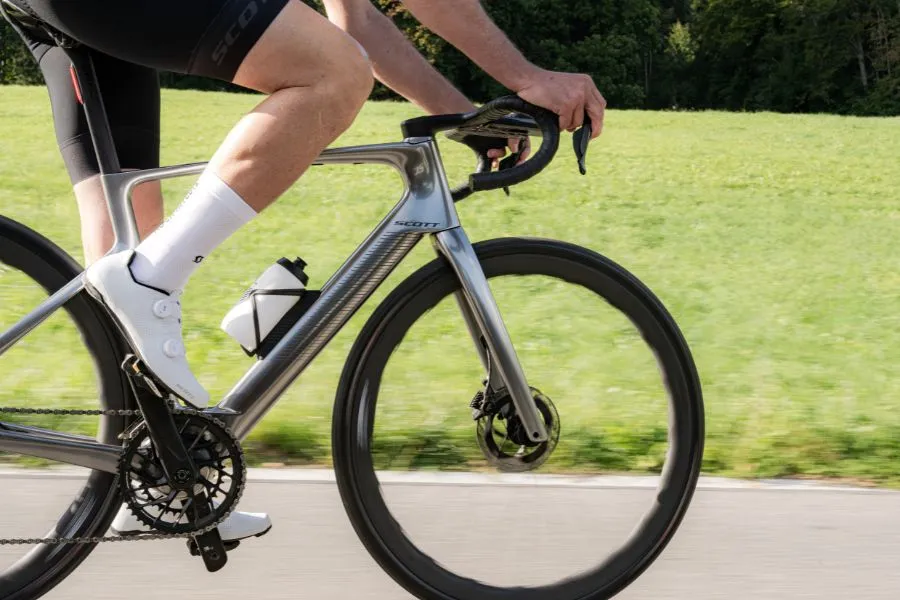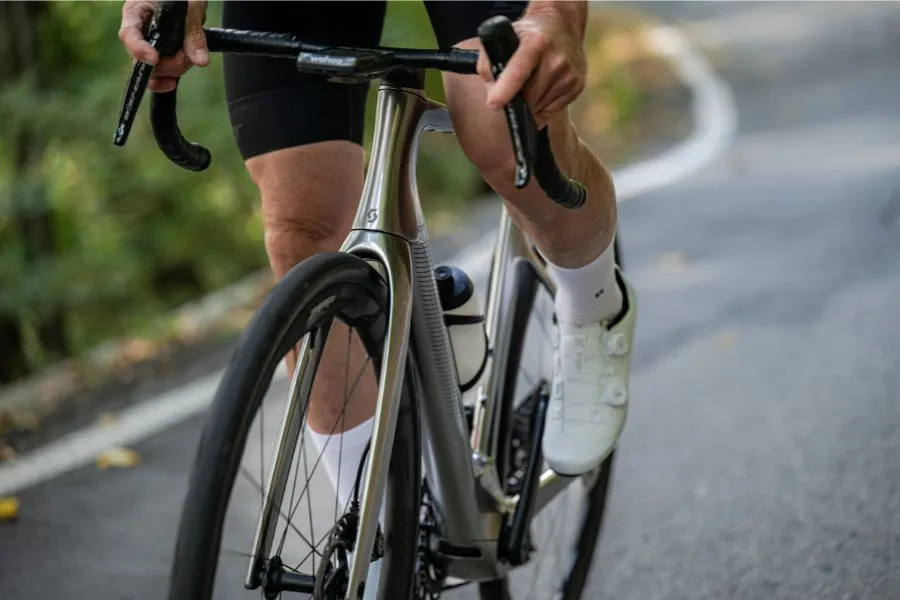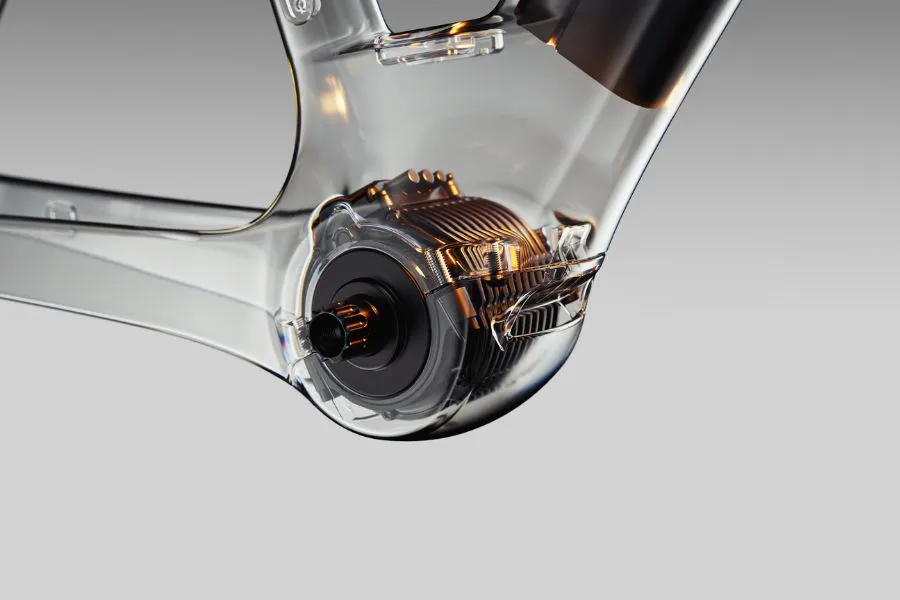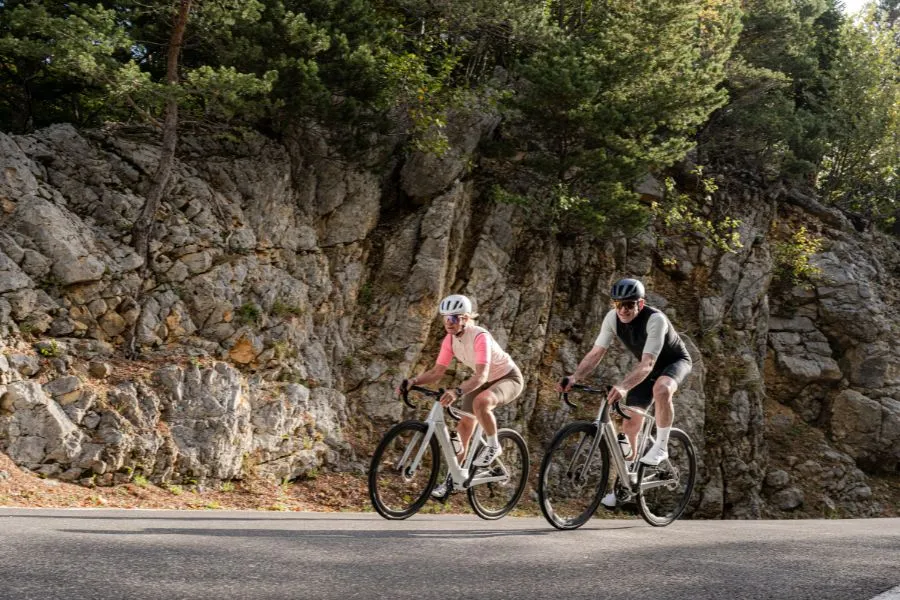The arrival of the SCOTT Fastlane signals a clear intent: electric road bikes are moving beyond early compromises and into a phase where the assistance is almost invisible—visually and on the road. Fastlane’s brief is unapologetically “road bike first”, with the electric elements designed to disappear until you need them. A slim downtube, a drive unit tucked between the cranks, and a minimalist bar‑end display keep the silhouette close to SCOTT’s analogue Addict. The objective is a clean look and a natural ride feel that doesn’t distract from the simple act of pedalling fast on tarmac.

Beneath the surface lies TQ’s new HPR40 mid-drive, a compact system focused on smooth, quiet, and low-drag power delivery rather than headline-grabbing torque figures. Paired with a 290Wh internal battery and three assistance modes, which can be switched from the hoods, the package aims to offer that “second wind” on climbs and rolling terrain without altering the bike’s character. Claimed weights for the HMX carbon platform—an 865g frame and 353g fork—underline SCOTT’s weight‑first approach, while aero‑informed shaping is said to help riders get up to 25km/h more efficiently and cruise there with less battery draw.
Context matters. Lightweight e‑road is in the midst of an arms race kicked off by the sub‑10kg Canyon Endurace: ONfly, which put TQ’s mid‑mount concept at the centre of a true endurance race bike silhouette. The SCOTT Fastlane joins that conversation from a slightly different angle: integration that feels invisible, practical touches for real‑world riding, and geometry aligned with a proven road platform. On paper, it’s a compelling blend of discretion, efficiency and day‑to‑day usability.

A road bike first, with power in reserve
SCOTT’s framing of Fastlane is straightforward: engineer stiffness, handling, and ride feel to match a conventional endurance road bike, then seamlessly integrate the e-assist so that it never dominates. The headline numbers are there to support the claim—an HMX frame at a claimed 865g and fork at 353g—while tyre clearance up to 34mm expands the bike’s remit from billiard‑table smooth roads to the patchier reality of lanes, cut‑throughs and light rougher surfaces. The aero‑leaning tube profiles serve a dual purpose, helping the rider reach and hold speeds above the 25km/h assistance limit more easily, which in turn conserves battery on rolling routes.
The cockpit is deliberately uncluttered. A small bar-end LED display provides essential indicators—battery level and assist mode—while mode changes occur via discreet hood buttons. ANT+ connectivity enables riders to display system information on a preferred head unit, providing more data on the screen. There’s no large display, no oversized remote, and no extra cables around the bar area to compromise the clean lines.

TQ HPR40: discreet assistance, natural feel
At the centre of the SCOTT Fastlane is TQ’s HPR40, mounted at the cranks for compact packaging and a low, central mass. The unit delivers up to 40Nm of torque and a maximum of 200W, prioritising a smooth, analogue-like response with notably low drag when assistance is cut out. SCOTT says the newest iteration is lighter, quieter and more compact than before, with drive characteristics designed to “learn” rider input and adapt support accordingly. In practice, the promise is simple: help when you need it most on gradients and into headwinds, then an almost imperceptible transition back to unassisted pedalling above the 25km/h threshold.
Three modes—eco, mid, and high—cover most road scenarios without requiring constant attention to the controls. The focus is on keeping the rider in the moment; the assist should feel like fresh legs rather than an on/off motor. For those who care about numbers, ANT+ brings the option to surface range and support metrics on a head unit, but the Fastlane’s default philosophy is to pare back the tech theatre and let the ride take centre stage. For a deeper dive into TQ’s architecture, see our TQ HPR50 e‑bike motor review and our guide to e‑bike motors.

Integration, weight and everyday practicality
The component integration ont he SCOTT Fastlane relies heavily on Syncros hardware to keep weight down and maintain a tidy silhouette. The Premium and 10 builds utilise the IC-R100-SL Carbon cockpit for a clean front end, with the rest of the line sharing several touchpoints with SCOTT’s Addict—including the neat iS Drop Bar Tool 2, hidden in the bar for trail-side tweaks. The top-tier Premium opts for fully carbon-finished trim to shave grams wherever sensible.
Lighting and storage are baked in rather than bolted on. A rear light is integrated at the frame, and the system is wired to run a compatible front light from the main battery—useful for winter commuting and early starts when you want fewer things to charge. For extra kit, a dedicated Syncros frame bag mounts neatly under the top tube via rivets, eliminating the need for straps and keeping the lines clean.

Mechanical standards aim to keep the platform future‑proof. Universal Derailleur Hanger (UDH) compatibility should ease drivetrain upgrades and alignment, while the 34mm tyre clearance broadens the Fastlane’s envelope into endurance and light all‑road territory. The emphasis remains firmly on tarmac speed and efficiency, but it is reassuring to see comfort and versatility considered alongside the weight figures.
Where Fastlane sits in the new e‑road landscape
Canyon’s Endurace: ONfly has set a new benchmark for weight and integration in this category, pairing a sub-10 kg build with the same TQ mid-mount philosophy. SCOTT’s Fastlane appears to embrace that direction—prioritising a road‑first feel, clean aesthetics and discreet assistance—while bringing its own flavour of integration and endurance geometry. Against rear-hub systems, such as Mahle’s X20, the mid-drive approach offers a more balanced mass and the potential for a more natural response. Against larger mid-drives from Bosch or Shimano, it trades outright torque for low drag and a ride that stays closer to that of an analogue road bike.
The implication is that e‑road no longer needs to look or feel like a compromise. Compact mid-mount motors, smaller batteries, and aerodynamic-informed frames now allow brands to deliver bikes that pass a casual glance as traditional road machines, yet add a subtle layer of assistance that expands routes, softens climbs, and makes longer days more attainable.

Models, availability, and build notes
The Fastlane range comprises three models, all built around the same HMX carbon chassis and featuring integrated design elements. Fastlane Premium sits at the top, featuring full-carbon finishing and the Syncros IC-R100-SL cockpit in a Chrome Silver finish. Fastlane 10 mirrors the clean cockpit in Cumulus White, while Fastlane 20 offers Violet Pink or Carbon Black paint. Specifications and pricing are provisional by market, but the underlying technical package remains consistent across the trio: TQ HPR40 mid-drive, 290Wh internal battery, bar-end LED display with hood-button control, ANT+ connectivity, integrated rear light with front-light power option, 34mm tyre clearance, and UDH compatibility.
For riders watching the e‑road space, Fastlane reads like a confident statement that the category has matured. It looks like a road bike, is built to ride like one, and adds just enough electric support to keep the pace high when the gradient or fatigue would otherwise take their toll. If the recent surge of mid‑drive, featherweight e‑road machines is anything to go by, the competitive landscape is only going to get more interesting from here.

